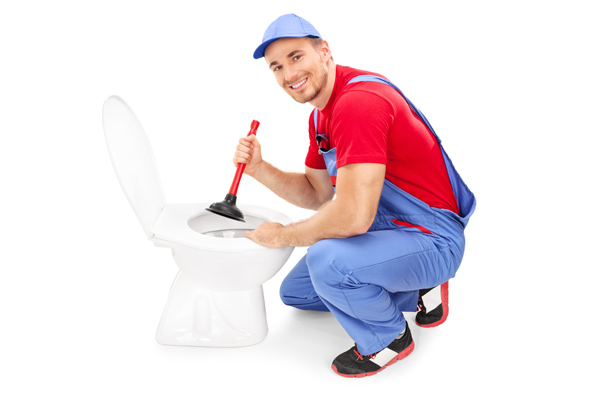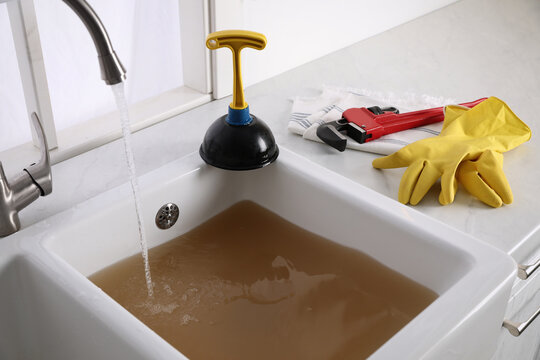Perfecting Plungers and Drain Cleaner: Pro Methods
Perfecting Plungers and Drain Cleaner: Pro Methods
Blog Article
What're your thoughts with regards to How to Use a Plunger to Unclog a Toilet or Drain?

Introduction
Proper upkeep of household drains pipes is important for protecting against blockages and ensuring smooth water circulation. One of the trick tools in every property owner's toolkit is the bettor, alongside different drainpipe cleansers designed to deal with stubborn obstructions efficiently. This article checks out just how to utilize bettors and drainpipe cleaners properly to keep your drains streaming freely.
Area 1: Recognizing Plungers
Sorts of Plungers
There are a number of sorts of bettors readily available, each made for various sorts of drains pipes and obstructs. The most common types consist of cup plungers, flange bettors, and accordion plungers.
How Plungers Job
Bettors work on the concept of producing pressure and suction to displace blockages. When properly used over a drain, they develop a vacuum that can take out particles or break up clogs.
Choosing the Right Plunger
Picking the right plunger relies on the type of drain and the nature of the blockage. Mug bettors are optimal for sinks and bathtubs, while flange bettors are better suited for toilets because of their style.
Usual Blunders with Plungers
Preventing these mistakes makes certain efficient plunging: inappropriate seal around the drain, inadequate force, and not clearing bordering particles.
Section 2: Using Plungers Effectively
Prep work
Prior to diving, make sure the bettor covers the drain completely and forms a limited seal. Clear any type of visible particles around the drain opening.
Strategy
Begin with gentle plunging motions to develop suction. Increase pressure progressively, making use of a stable rhythm. Repeat as necessary up until the drainpipe clears.
Repairing Tips
If diving doesn't work, attempt adjusting the seal, applying petroleum jelly for a far better seal, or using a different kind of bettor.
Area 3: Recognizing Drain Cleaners
Types of Drain Cleansers
Drain cleansers can be chemical or enzymatic. Chemical cleansers utilize strong chemicals to dissolve blockages, while enzymatic cleaners make use of all-natural enzymes to break down raw material.
How Drain Cleansers Job
Chemical cleaners respond with obstructions to dissolve them, while enzymatic cleansers break down natural products like hair and grease without hurting pipes.
Security Considerations
Always use gloves and eye defense when utilizing chemical drain cleansers. Make sure sufficient air flow and comply with manufacturer guidelines thoroughly.
Eco-Friendly Alternatives
Take into consideration utilizing vinegar and cooking soda or enzyme-based cleaners for eco-friendly choices that are more secure for pipes and the atmosphere.
Area 4: Making Use Of Drainpipe Cleaners Efficiently
Application Methods
Put chemical cleansers straight right into the drainpipe opening. Allow them to help the suggested time before flushing with hot water. Chemical cleansers must sit overnight.
Safety measures
Prevent mixing different sorts of cleansers, as this can create hazardous fumes. Never utilize chemical cleaners in conjunction with a bettor, as spilling can take place.
Taking Care Of Persistent Clogs
For relentless clogs, think about using a pipes serpent or calling an expert plumbing technician to prevent damage to pipelines.
Final thought
Finally, comprehending just how to use plungers and drainpipe cleaners successfully is important for preserving healthy and balanced pipes systems. By picking the right devices and strategies, homeowners can tackle minor clogs and avoid major plumbing issues down the line.
How to Use a Plunger to Unclog a Drain
The humble plunger is a simple yet effective tool for breaking clogs in sinks, tubs and toilets. This handy tool is easy to use. You can make the most of its power if you understand how it works. Ready to dive in? Here’s what you need to know.
Safety First!
Never use a plunger with drain chemicals. Water will splash as you work, and the chemicals can spatter, burning skin and eyes. It’s a good idea to use rubber gloves and wear safety goggles when you work on a clog.
Choose the Right Tool for the Job
Plungers come in two different styles. Sinks, bathtubs and showers require a cup plunger. Like its name suggests, the rubber end is shaped like a cup. Use a flange plunger on toilets. These plungers have a rubber funnel extending from the cup. A plunger needs to be big enough to cover the drain.
Ready, Set, Plunge!
Coat the rim: Coat the plunger rim with petroleum jelly. This helps make a better seal.
Block outlets: Hold a wet rag over nearby outlets such as the overflow vent or the drain in a second sink.
Release air: Insert the plunger at an angle into the water. Water will displace air in the cup. A water-filled cup is more forceful than one filled with air.
Keep the plunger upright: Hold the plunger perpendicular to the drain. Use fast, forceful strokes, but make the first stroke gentle. The first stroke can create a splash if the cup still contains air. Thrust the plunger 15 to 20 times.
Snap off the plunger: The final stroke should be a strong upward motion that ends when the plunger snaps off the drain.
Repeat the process: you may need to repeat this sequence several times. When the water drains away, your work is done. High-five! https://plumbernw.com/blog/how-to-use-a-plunger-to-unclog-a-drain/

Application Methods
Put chemical cleansers straight right into the drainpipe opening. Allow them to help the suggested time before flushing with hot water. Chemical cleansers must sit overnight.
Safety measures
Prevent mixing different sorts of cleansers, as this can create hazardous fumes. Never utilize chemical cleaners in conjunction with a bettor, as spilling can take place.
Taking Care Of Persistent Clogs
For relentless clogs, think about using a pipes serpent or calling an expert plumbing technician to prevent damage to pipelines.
Final thought
Finally, comprehending just how to use plungers and drainpipe cleaners successfully is important for preserving healthy and balanced pipes systems. By picking the right devices and strategies, homeowners can tackle minor clogs and avoid major plumbing issues down the line.
How to Use a Plunger to Unclog a Drain
The humble plunger is a simple yet effective tool for breaking clogs in sinks, tubs and toilets. This handy tool is easy to use. You can make the most of its power if you understand how it works. Ready to dive in? Here’s what you need to know.
Safety First!
Never use a plunger with drain chemicals. Water will splash as you work, and the chemicals can spatter, burning skin and eyes. It’s a good idea to use rubber gloves and wear safety goggles when you work on a clog.
Choose the Right Tool for the Job
Plungers come in two different styles. Sinks, bathtubs and showers require a cup plunger. Like its name suggests, the rubber end is shaped like a cup. Use a flange plunger on toilets. These plungers have a rubber funnel extending from the cup. A plunger needs to be big enough to cover the drain.
Ready, Set, Plunge!
Coat the rim: Coat the plunger rim with petroleum jelly. This helps make a better seal. Block outlets: Hold a wet rag over nearby outlets such as the overflow vent or the drain in a second sink. Release air: Insert the plunger at an angle into the water. Water will displace air in the cup. A water-filled cup is more forceful than one filled with air. Keep the plunger upright: Hold the plunger perpendicular to the drain. Use fast, forceful strokes, but make the first stroke gentle. The first stroke can create a splash if the cup still contains air. Thrust the plunger 15 to 20 times. Snap off the plunger: The final stroke should be a strong upward motion that ends when the plunger snaps off the drain. Repeat the process: you may need to repeat this sequence several times. When the water drains away, your work is done. High-five! https://plumbernw.com/blog/how-to-use-a-plunger-to-unclog-a-drain/

Do you appreciate reading up on Here's How to Correctly Use a Toilet Plunger? Put a remark below. We will be happy to find out your thoughts about this page. In hopes to see you back again in the near future. Those who appreciated our page plz make sure you remember to pass it around. We enjoy your readership.
Set Up An Appointment Report this page